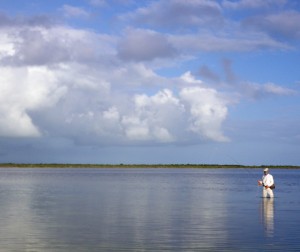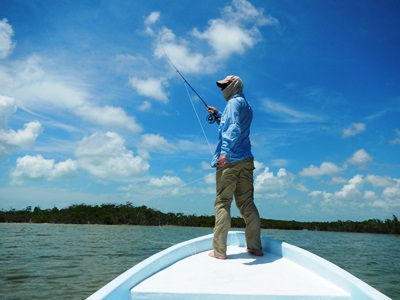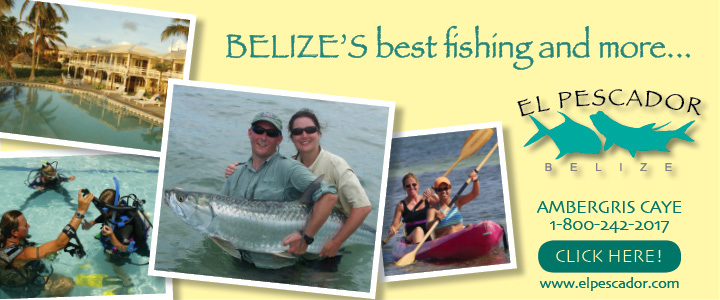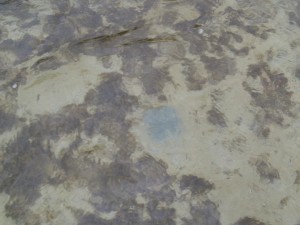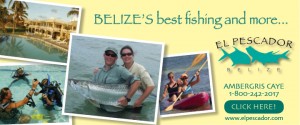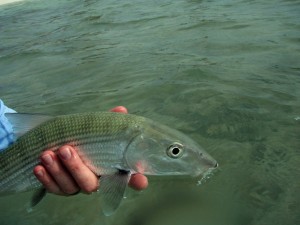After reading my “Plan A” post yesterday, Scott Heywood shared his Plan A, which, as it turns out, is kind of the opposite of mine. I am always up for hearing advice or ideas contrary to my own. Here’s what he had to share:
STEP ONE:
Get the pointy thing in front of the fish. To do this, hit the fish almost on the nose. Yea, yea, I know… this will spook fish and it will sometimes. But, most of the time, IF YOU DON”T MOVE THE FLY, the fish will come back and eat the fly. Get the fish to see your fly, then don’t move it. This is the technique most successful anglers use with permit so it is not a big stretch to use it with bonefish… especially big or wary bonefish.
STEP TWO:
If you don’t hit the bonefish on the snout (and more often than not, I do not), strip the fly in one long strip and if the fish sees the fly THEN DON”T MOVE THE FLY. Only move the fly if the fish appears to have not seen the fly or if it shows interest then veers off. React to the behavior of the fish and not just blindly retrieve.
If you are an angler who uses the “conventional” bonefish retrieve (quick strip, pause, quick strip etc.), I think you should try this Plan A. It does really work especially on spooky or wary big fish. If you notice your conventional presentation of predicting the path of the fish, casting well ahead and letting the fly sink, then stripping quickly when the fish gets to you fly is not working or is spooking fish, try this! “Cast far away, strip and you’ll spook ‘em, hit ‘em on the head and they’ll eat.”
Here is the same technique from a guide’s perspective. This comes from Sidney Thomas. Sidney is the sensational head guide at Water Cay Lodge on Grand Bahama Island.
So I tell them to rest that fly, watch the fish not the line. When those fins stick straight out and they are looking for what made that splash, bump it just a bit. No shrimp or worm has ever outrun a big bonefish… they hide. Bump and watch. Wait … the fish will find it and eat it. Wading or on the boat it can be hard for guests to see the fish tip down and eat, but I see it every time. I tell them to make a looooooong clean strip. I don’t say he ate it or hit ‘em like lots of guides do. The looooong strip is calm and easy and most times that fish has eaten the fly and is moving away. When guests make the long strip the line comes tight, the bonefish feels it and the guest… well… that’s why they came to Water Cay.
For more info see

